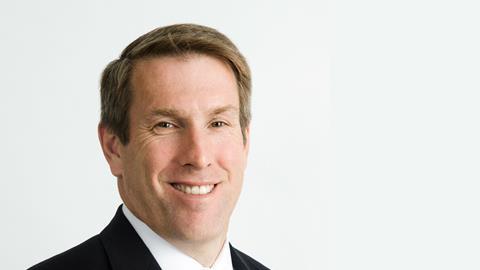Ahead of his DWIC 2018 ‘Global View’ keynote, the Aon Benfield chief executive speaks to Global Reinsurance about seizing opportunities in the market
Large firms like Aon will always be buffered against the industry’s headwinds – across both its insurance and reinsurance legs. While the reinsurance industry released its baited breath after a relatively mild 1/1 renewals, Aon was securing a reinsurance for £900m reinsurance of annuity business for UK firm Liverpool Victoria Friendly Society (LV=).
Though the wheels keep on turning, this doesn’t mitigate the need for innovation and smart working – particularly when it is proven to driving growth.
To this end, Aon has been exploring more internal collaboration as a means to providing clients with a more multi-layered and bespoke offering. Aon Benfield chief executive Eric Andersen is well-placed to champion this type of collaboration, having been the chief executive of Aon Risk Solutions Americas, and having held various senior positions in Aon’s insurance business.
Ahead of his Global View Keynote at DWIC 2018, Andersen explains to Global Reinsurance editor Samera Owusu Tutu how a more unified approach across all the Aon’s pools of talent and specialism is leading to positive change.
Having recently completed the important January renewals period, what will you be telling the DWIC about the current state of the reinsurance market?
As you say, 1/1 is an important date for the industry – we estimate that around 60% of reinsurance premium is renewed at that time, so it provides a very good indication of the state of the market and the outlook for the year. What we saw this year was an orderly renewals period that withstood the severe catastrophe losses of 2017.
Some of the insurers impacted by the catastrophes would have seen some upwards adjustment in reinsurance pricing at renewals, but we were pleased to see that as a result of our in-depth conversations with reinsurers around our clients’ programs and their specific circumstances, we managed to move away from the potential for broad-brush rate increases. We found that reinsurers were open to such discussions, and receptive to the analyses we perform to highlight our clients’ individual risk profiles.
Did alternative capital play its part in keeping the market stabilised?
When you consider that the level of alternative capital in the marketplace is approaching $100bn, and total reinsurance market capacity is around $600bn, it’s clear that the influence of alternative capital is now potentially quite significant. As a point of reference, in 2010 we estimated that alternative capital stood at $24bn against a total reinsurance capacity of $470bn.
Alternative capital can help to smooth the volatility that might otherwise be seen in the marketplace after loss events. That being said, despite the high level of catastrophe losses in 2017, we found that conversations with the traditional market at the 1/1 renewals were very constructive, with reinsurers willing to examine programs on an individual basis.
Looking specifically at ILS, and although there were some catastrophe bond losses as a result of the 2017 natural catastrophes, it is highly encouraging that investor and sponsor demand did not diminish. So while 2017 was certainly a test for the ILS sector, its response to that test was very strong.
Click here to read the full interview in the Global Reinsurance Spring 2018 edition.











No comments yet